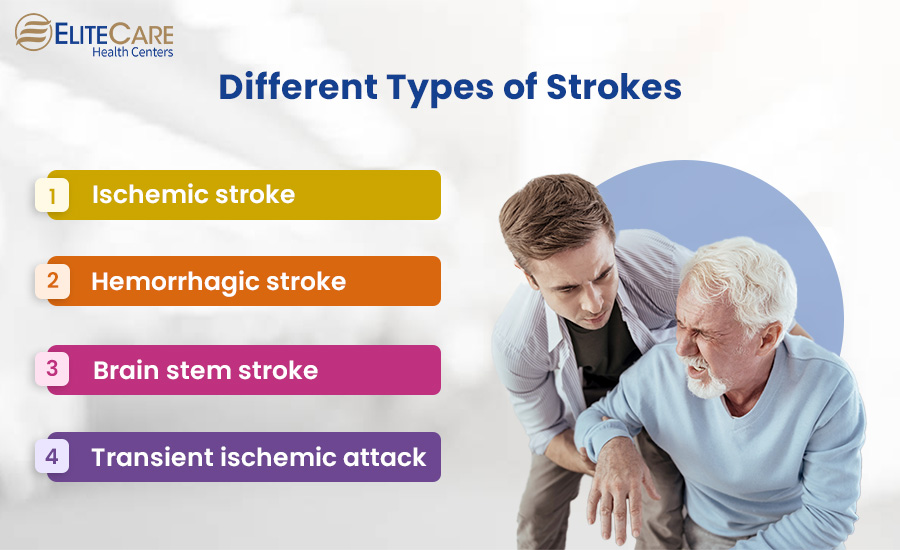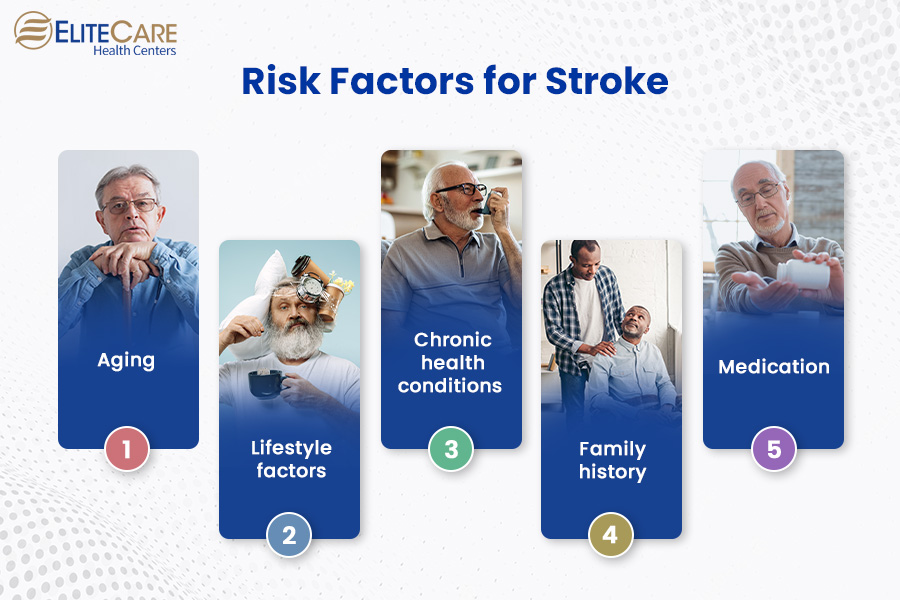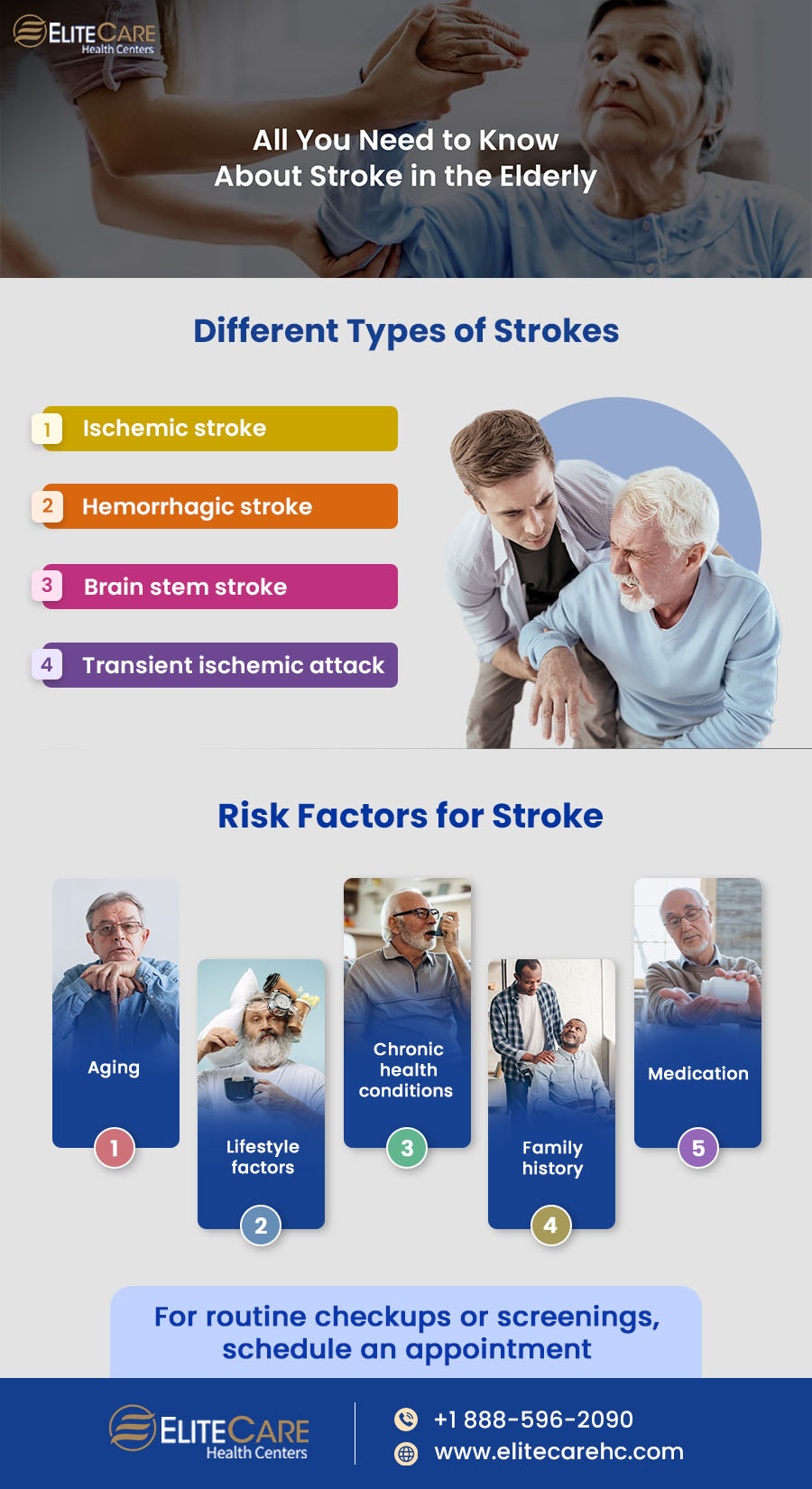
Stroke is a common but serious medical emergency that can affect people of all ages, which if not treated in time can cause severe and long-lasting effects. It can lead to brain damage, prolonged disability, and even mortality in some cases. According to estimates, someone suffers from a stroke every 40 seconds1 in the United States and almost 75% of those affected are people over the age of 652. Additionally, the risk of stroke doubles every decade after the age of 55, making stroke a major concern for the rapidly growing aging population in America3. As the baby boomer generation continues to age, the incidence of stroke in the elderly is also expected to rise, making it crucial for seniors and caregivers to understand the risk factors and warning signs of this condition.
What is a Stroke?
A stroke is a cerebrovascular accident (CVA) that occurs when blood flow to the brain is disrupted. This can happen either due to a blockage in a blood vessel supplying the brain or when a blood vessel in the brain ruptures and causes bleeding. The lack of blood flow and oxygen to the brain causes brain cells to die, leading to damage and functional impairment.
The symptoms of stroke in the elderly can vary depending on the type and severity, but some common signs of stroke include:
- Sudden weakness or numbness
- Slurred speech.
- Sudden confusion or trouble with vision, such as double vision or loss of vision in one or both eyes.
- Severe headache with no known cause.
- Loss of balance or coordination.
- Facial drooping
It is important to note that not all strokes present the same symptoms, and some people may not experience all of the ones mentioned above. However, if a senior is suffering from facial drooping, arm weakness and speech difficulties, it is important to seek medical attention immediately. Early treatment in the golden period can help minimize the damage caused by a stroke and significantly improve the chances of recovery.
Different Types of Strokes

The four main types of strokes that affect the elderly include:
Ischemic Stroke
Hemorrhagic Stroke
It occurs when a blood vessel in the brain ruptures and causes bleeding. It can happen due to uncontrolled high blood pressure, aneurysms (weak areas in the walls of blood vessels), or trauma to the head. The bleeding can cause pressure and damage to the surrounding brain tissue, leading to further complications. Hemorrhagic stroke accounts for about 15% of all strokes, but it is more likely to result in severe disability or death than ischemic stroke.
Brain Stem Stroke
It occurs when a blood vessel in the brain stem (the lower part of the brain that connects to the spinal cord) ruptures or becomes blocked. The brain stem is responsible for regulating vital bodily functions, such as breathing, heart rate, and blood pressure. It also controls movement and sensation in the face, neck, and limbs. Therefore, a stroke in this area can be life-threatening and cause significant disability.
Transient Ischemic Attack (TIA)
The transient ischemic attack also known as a “mini-stroke” is a temporary episode of ischemia that causes stroke-like symptoms but typically resolves within a few minutes to a few hours. TIAs are often warning signs of an impending stroke and should be taken seriously.
Stroke can have serious consequences for the elderly, regardless of the type. If not treated in time, they can negatively impact seniors’ ability to perform activities of daily living, such as dressing, grooming, and bathing. Therefore, it is crucial to be aware of the risk factors that increase the likelihood of experiencing a stroke in order to prevent or manage the condition better.
What Are the Risk Factors for Stroke?

Several risk factors can increase seniors’ likelihood of suffering from a stroke. These include:
Aging
As people age, their blood vessels become less flexible and more prone to damage. This can increase the risk of blood clots forming in the brain.
Chronic Health Conditions
Older adults are more likely to have chronic health conditions, such as high blood pressure, diabetes, and heart disease, which can increase the risk of stroke.
Read More: 5 Ways for Seniors to Have a Healthy Heart
Lifestyle Factors
Unhealthy lifestyle habits, such as smoking, poor diet, and lack of exercise, can have a cumulative effect on the body’s cardiovascular system and increase the chances of experiencing a stroke.
Medication
Elderly individuals are more likely to be taking medication like blood thinners or anti-inflammatory drugs that can cause bleeding in the brain.
Family history
If a close relative, such as a parent or sibling, has had a stroke, an individual’s risk of experiencing a stroke is much higher than that of someone without a genetic predisposition.
Additionally, seniors who have suffered a previous episode of stroke or transient ischemic attack (TIA) are at increased risk of having another. To reduce the risk of stroke, it is important to manage these risk factors effectively. Moreover, seniors who have a family history of stroke or who have previously experienced one should be particularly vigilant about getting treatment and managing their health to prevent further incidents. But what are some of the steps that seniors can take to reduce the risk of stroke? Read on to find out.
8 Steps Seniors Can Take to Reduce Stroke Risk
Taking these steps can help lower the risk of suffering from a stroke:
- Maintain a healthy blood pressure
- Manage blood sugar levels
- Control high cholesterol
- Quit smoking or using tobacco products
- Limit alcohol consumption
- Engage in regular physical activity
- Consume fruits, vegetables, whole grains and lean protein
- Use meditation & deep breathing to manage stress
Read More: Easy Lifestyle Changes to Manage High Cholesterol in Seniors
It is also important for seniors to get regular checkups to help detect and get treatment for underlying health conditions that increase the risk of stroke.
Conclusion
Stroke is the fifth leading cause of death in America. It is also a leading cause of long-term disability. The impact of a stroke can be far-reaching, not only affecting the lives of those who experience it but also their families and loved ones. Therefore, it is important for seniors to take preventive measures and undergo regular screenings to detect any blood vessel abnormalities. Early intervention can help avoid potentially life-threatening consequences and improve the chances of successful recovery.
If your elderly loved one is at risk for stroke, visit the nearest EliteCare clinic for more guidance on prevention and management strategies. EliteCare is one of Florida’s best medical clinics, with a team of highly trained primary care physicians who offer services like venipuncture, immunizations, EKG and more. Visit their website to schedule an appointment today.






